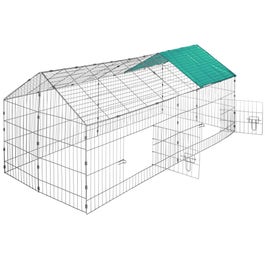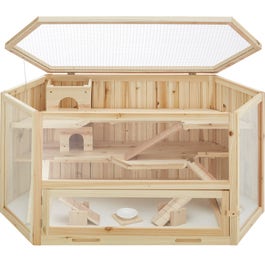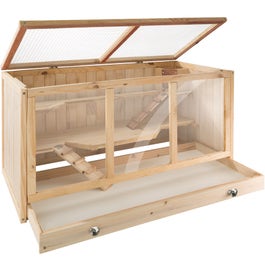Small animal cages & hutches - a cosy home for rabbits and other small animals
If you want to keep your rabbit or guinea pigs in the garden, you’ll need a suitable rabbit run. As these social animals should never be kept alone, the hutch should be large enough: the minimum length is 190 centimetres and the minimum width is 90 centimetres. Important: a high-quality rabbit hutch should be completely waterproof and escape-proof.
Set up the hutch for your pets as follows: use bark mulch, sawdust or hay as bedding. A little hut will protect them from the cold and give little mammals somewhere to retreat to. Toys like branches and toilet rolls keep things interesting in the rabbit hutch.







